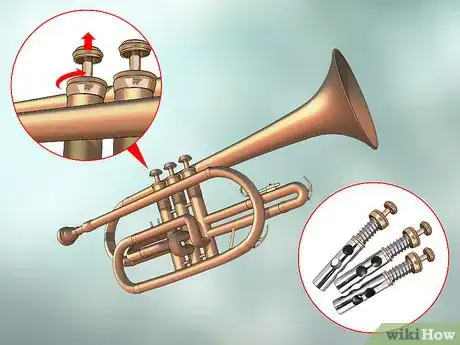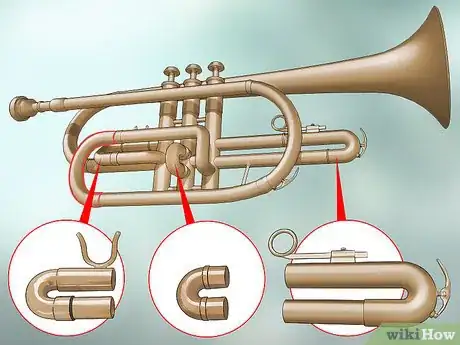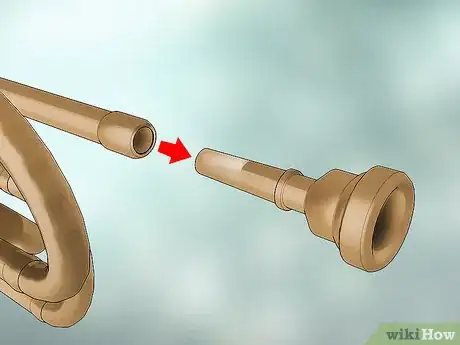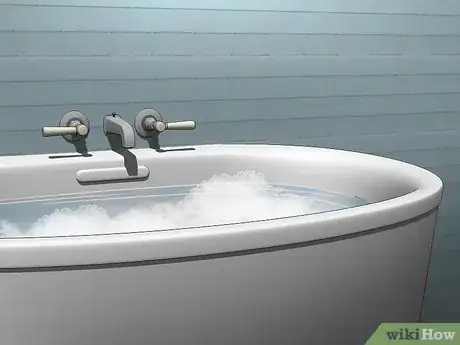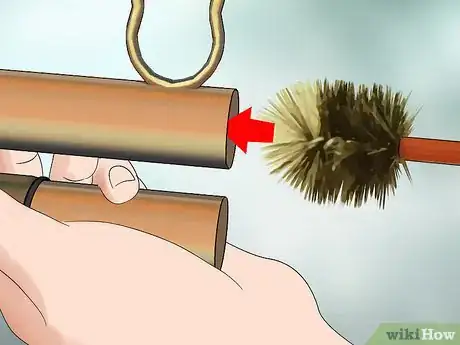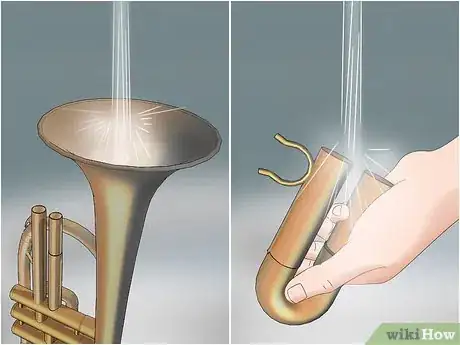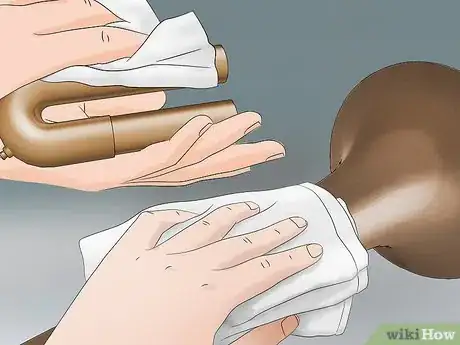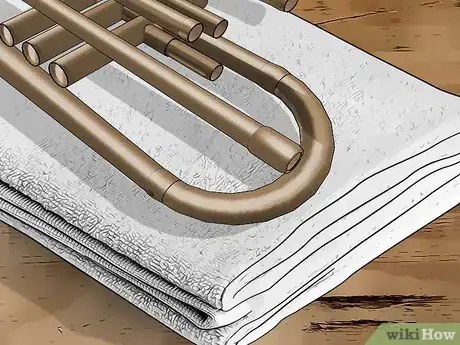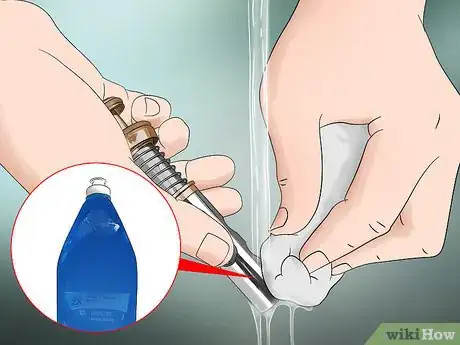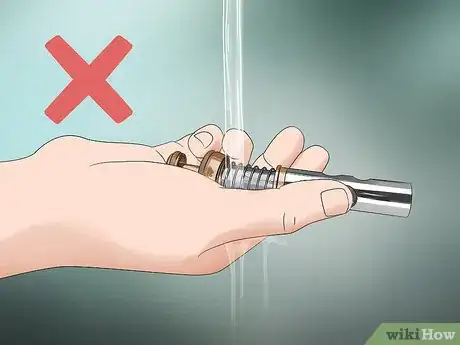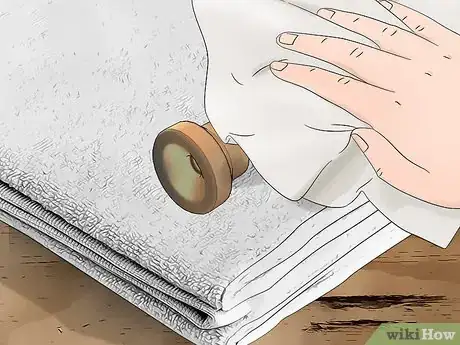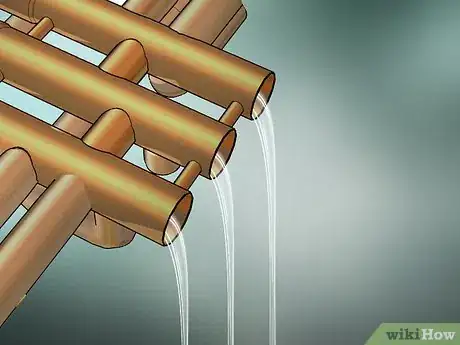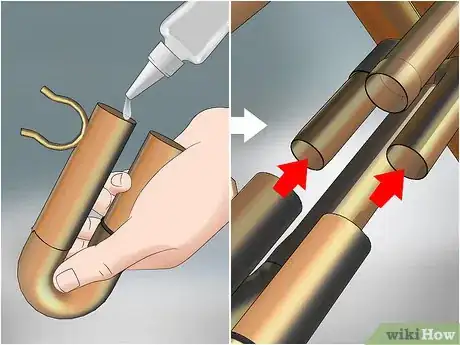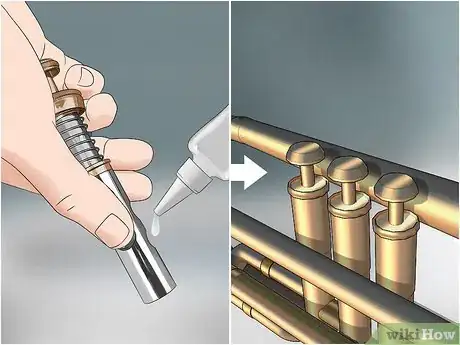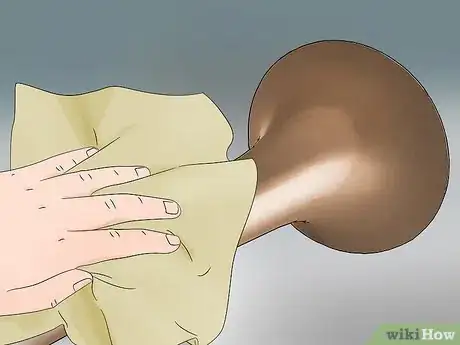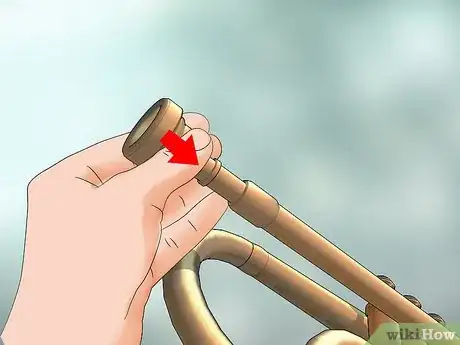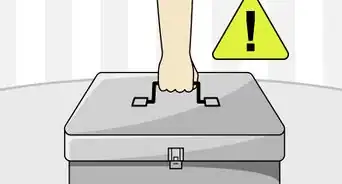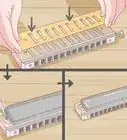This article was co-authored by wikiHow Staff. Our trained team of editors and researchers validate articles for accuracy and comprehensiveness. wikiHow's Content Management Team carefully monitors the work from our editorial staff to ensure that each article is backed by trusted research and meets our high quality standards.
wikiHow marks an article as reader-approved once it receives enough positive feedback. In this case, 89% of readers who voted found the article helpful, earning it our reader-approved status.
This article has been viewed 192,953 times.
Learn more...
If you play the trumpet, you might notice the accumulation of debris in your horn over time. It’s a good idea to clean your trumpet once every three months or so, both for the sake of sanitation, and to ensure that the buildup won’t affect the sound of your trumpet. By taking the time to clean the different parts of your trumpet with warm water and a mild dish soap, and then oil its various slides and valves, you can keep your trumpet clean and in great playing condition.
Steps
Disassembling the Trumpet
-
1Remove all three valves from your trumpet. Carefully unscrew the valve caps before removing the valves from the horn. Place them somewhere safe where they won’t get lost or knocked over by kids or pets. Be sure to keep them in their proper order so that you won’t have a hard time reassembling them later.
-
2Remove the slides. Begin by removing the first slide, which is the slide closest to your body when you hold the trumpet in playing position. Gently pull the slide away from the horn; this should be relatively easy, and should require no more than slight pressure from your hands.
- Remove the second and third slides as well.
- If your slides are stuck, do not attempt to force them out, as this may cause damage to your trumpet, and instead seek the help of a trumpet professional.[1]
Advertisement -
3Take off the mouthpiece and set it aside. Use one hand to tug the mouthpiece away from the trumpet while you stabilize the body of the horn with your other hand. At this point, your trumpet should be fully disassembled, and ready to be cleaned.
Cleaning the Trumpet Body and Slides
-
1Fill a bathtub or a large basin with warm water and soap. The water should be moderately warm, but not scalding. Be sure to fill the tub with enough water to fully immerse the body of your trumpet. Mix a few drops of mild dish soap into the tub. Lay a towel on the bottom of the tub to protect your trumpet from scratching.
-
2Place the slides and the main body into the bathtub to soak. Your slides should remain in the tub for about 1 minute, while the body can soak for up to 5-10 minutes.[2]
-
3Clean the slides and tubing of your trumpet. Use a cleaning snake or brass saver to clear debris from the insides of the tubing. Run the snake gently through the insides of your slides and tubing once they're finished soaking in the tub. Be careful not to force the snake into any tight areas in the tubing, as this might damage their interior.
-
4Clean the body of the trumpet. Dip a washcloth into the soapy bath water, and use the cloth to wash the outside of the trumpet body, the inside of the bell, and the outsides of your slides and tubing. This step allows you to sanitize the exterior of your instrument.
-
5Rinse your slides and trumpet body with warm water. For the body, flush clean, lukewarm water through the bell of the horn until it runs clean and soap-free from the other end of the horn, where the mouthpiece is usually attached, and then rinse the outside of the body until all of the suds are gone. Flush water through the slides until they are free of soap as well.
-
6Dry your slides and trumpet body with a washcloth. Dry one piece at a time, and use caution with the washcloth to avoid damaging any part of your instruments. Gently run the washcloth along the exterior of your slides and trumpet body in order to absorb all excess moisture.
-
7Set the body and slides aside to air-dry. When you're finished drying the exterior of these parts with the washcloth, allow their insides to dry by placing them on a thick towel on a dry surface or countertop. Place the slides near the places where they will eventually be reinserted into the trumpet to avoid mixing them up later on.
Cleaning the Valves and Mouthpiece
-
1Wash the bottoms of your valves. Clean the bottom section of your valves with warm running water and a small amount of dish soap. Place the bottom bottom side of the valves beneath the running water, and then apply soap with your fingers or a damp washcloth. Focus on cleaning out the small holes underneath the valves that line up with the slides rather than cleaning the entire valve. Rinse all soapy water from the valve holes.[3]
-
2Keep the top parts of your valves away from the water. When cleaning trumpet valves, it's important to keep the tops dry. Water will ruin the felt pads at the top of the valves, which will prevent them from aligning properly when your reassemble your trumpet.[4]
-
3Set your valves aside to air-dry. Do not dry the valves by hand, as you might run the risk of inadvertently running a damp towel near the felt pads. Instead, set the valves aside on a soft towel until you're ready to reinsert them into your trumpet.
-
4Clean your mouthpiece with a mouthpiece brush. Place the mouthpiece under warm running water, and insert the brush into the larger end of the mouthpiece. Spin the brush around the inside tubing of the mouthpiece in order to clear out any residue before rinsing again. Use the brush to scrub the outside of the mouthpiece as well.[5]
-
5Dry your mouthpiece with a washcloth. Gently use the cloth to hand-dry the exterior of your mouthpiece. Set it aside on a soft towel to allow the inside tubing to continue to air-dry before reinserting it onto the trumpet.
-
6Empty your spit valve. The spit valve is located at the bottom of the trumpet, close to the bell of the horn. Tilt your trumpet forward to allow all liquid to collect in the valve before pressing on the lever of the spit valve to release it. Empty the spit valve over a sink, toilet, or tub in order to avoid making a mess. When there is no liquid left in the valve, take your finger off the lever.[6]
Reassembling and Polishing the Trumpet
-
1Oil and reinsert your slides into the trumpet. Put a small dab of slide grease on the side of each slide and rub the grease evenly into the brass with your fingertips. Reinsert the slides into the trumpet, and use a tissue or washcloth to wipe off any excess oil.
-
2Oil your valves before reinserting them into your trumpet. Apply several drops of oil to the base of each valve, and place the valves back inside their proper casings on the body of the trumpet. Gently press the valves up and down once they are reinserted to make sure they are properly oiled.
-
3Polish your trumpet with a polishing cloth. For best results, use a silver or lacquer polish cloth, which can be obtained from music stores or online, and use small, circular buffing motions when rubbing the cloth into the instrument. Gently rub all surfaces of your trumpet until you obtain a nice, shiny finish.[7]
-
4Reinsert your mouthpiece onto the body of the horn. Use one hand to gently slide the mouthpiece onto your trumpet while stabilizing the body of the horn with your other hand. At this point, your trumpet is clean, reassembled, and ready to be played!
Community Q&A
-
QuestionWhat kind of soap should I use? Does it matter?
 Community AnswerMost soaps should work. However, use a soap that will not remain on the surface of your trumpet. Some music stores have special soaps for trumpets.
Community AnswerMost soaps should work. However, use a soap that will not remain on the surface of your trumpet. Some music stores have special soaps for trumpets. -
QuestionHow much does a snake pipe cost? Are they rare?
 Community AnswerNo, they are not rare. A cleaning kit at most music stores is about $7-$9, and includes a snake, a polishing cloth, a mouthpiece brush, a valve brush, slide grease and sometimes valve oil.
Community AnswerNo, they are not rare. A cleaning kit at most music stores is about $7-$9, and includes a snake, a polishing cloth, a mouthpiece brush, a valve brush, slide grease and sometimes valve oil. -
QuestionWon't the trumpet rust if you put it in water?
 Community AnswerA brass trumpet shouldn't rust if you are washing it properly and taking care of it.
Community AnswerA brass trumpet shouldn't rust if you are washing it properly and taking care of it.
Warnings
- If the water is too hot when washing your trumpet, it could cause your lacquer to peel off, so make sure the water is warm, not too hot, not too cold.⧼thumbs_response⧽
- Do not use a mouthpiece brush or snake on the outside of your trumpet, it will scratch it up.⧼thumbs_response⧽
- Do not use any kind of household cleaning product when washing your trumpet - be sure to use a mild dish soap or else you will risk damaging your trumpet.⧼thumbs_response⧽
Things You'll Need
- Bathtub or large basin
- Trumpet/valve snake
- Antibacterial dish soap
- Washcloths
- Valve oil
- Mouthpiece brush
- Sponge
- 2 towels
- Polishing cloths
- Slide grease
References
- ↑ http://markflegg.com/instruction/how-to-clean-your-trumpet/
- ↑ http://markflegg.com/instruction/how-to-clean-your-trumpet/
- ↑ http://markflegg.com/instruction/how-to-clean-your-trumpet/
- ↑ http://markflegg.com/instruction/how-to-clean-your-trumpet/
- ↑ http://hornmatters.com/2012/04/how-to-clean-a-horn-mouthpiece-and-sanitize-a-lead-pipe/
- ↑ https://itstillruns.com/empty-trumpet-spit-valve-12018631.html
- ↑ http://www.instructables.com/id/How-to-Clean-a-Trumpet/
About This Article
To wash your trumpet, soak the body for 5-10 minutes and slides for 1 minute in a bath of warm soapy water. Once you've soaked the trumpet, use a cleaning snake to remove debris from inside. Next, wash the body of the trumpet and inside of the bell with a cloth and soapy water before rinsing the body and slides. You'll also want to use running water and some soap to clean your valves. However, be careful only to clean the bottom of your valves, because getting water on the top part will damage the felt covering. For tips on how to disassemble your trumpet and how to clean your mouthpiece, read on!
